Atlantis: A Grain of Truth Behind the Fiction?
Abstract
1. Introduction
2. The End of the Ice Age
3. Is the Claimed Explanation of the Myth Compatible with Egyptian History?
4. In Search of Atlantis
- (a)
- The seabed of the Strait of Sicily is geologically rather quiet: it is almost possible to reconstruct the past shape of most of its coastline, taking into account only the eustatic factor (meaning that the isobath surfacing at a given sea level drop corresponds to the shoreline of the matching time) [4].
- (b)
- The island of Pantelleria, one of the four obsidian sources in the central-western Mediterranean, is one of the islets that dot the region.
5. Obsidian as a Possible Clue: an Example in the Central Mediterranean Basin
6. Discussion
Funding
Conflicts of Interest
Correction Statement
Appendix A
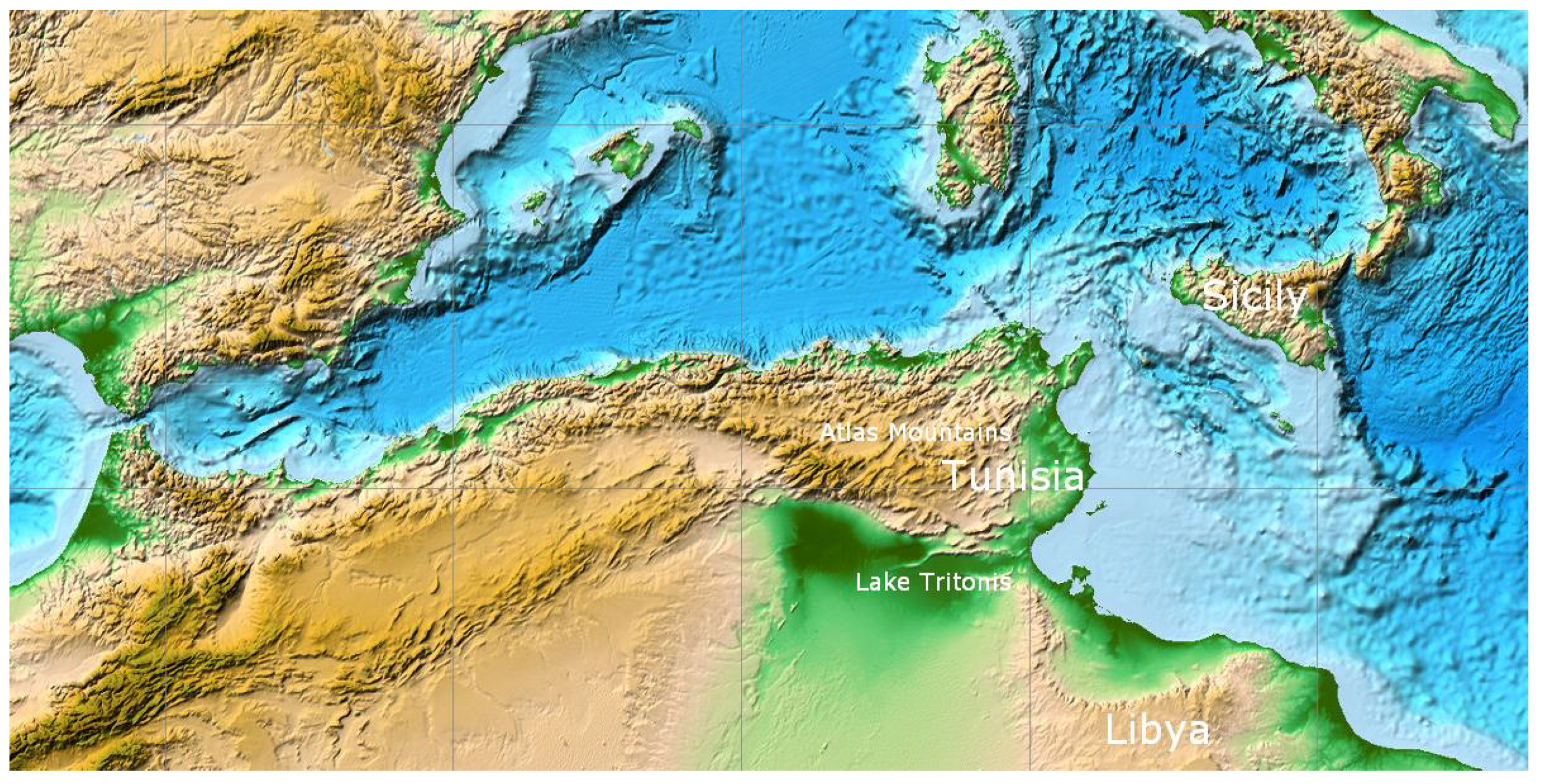
References
- Plato. Plato in Twelve Volumes; Lamb, W.R.M., Translator; The Loeb Classical Library; Harvard University Press: Cambridge, MA, USA; William Heinemann Ltd.: London, UK, 1925; Volume 9, Available online: http://catalog.perseus.org/catalog/urn:cts:greekLit:tlg0059.tlg032 (accessed on 21 January 2019).
- Taylor, A.E. Plato the Man and His Work; Methuen & Co. Ltd.: London, UK, 1926; ISBN 0-486-41605-4. [Google Scholar]
- Herodotus. The History of Herodotus; Macaulay, G.C., Translator; Macmillan: London, UK, 1890; Online translations at Project Gutenberg: Volume 1–2. [Google Scholar]
- Rapisarda, M. A scientific approach to Plato’s Atlantis. Atti della Accademia Peloritana dei Pericolanti. Classe di Scienze Fisiche, Matematiche e Naturali 2015, 93, C1. [Google Scholar] [CrossRef]
- Van De Mieroop, M. A History of Ancient Egypt; John Wiley & Sons: Chichester, UK, 2011; ISBN 978-1-4051-6070-4. [Google Scholar]
- Pausanias. Description of Greece with an English Translation by W. H. S. Jones and H. A., Litt. D., Ormerod; Harvard University Press: Cambridge, MA, USA; William Heinemann Ltd.: London, UK, 1918; Volume 4, Available online: http://www.perseus.tufts.edu/hopper/text?doc=Perseus%3Atext%3A1999.01.0160 (accessed on 21 January 2019).
- Diodorus of Sicily. The Library of History. II; Oldfather, C.H., Translator; The Loeb Classical Library 303; Harvard University Press: Cambridge, MA, USA, 1935; Volume 12, Available online: http://www.loebclassics.com/view/LCL303/1935/pb_LCL303.i.xml (accessed on 21 January 2019).
- Sergent, B. L’Atlantide et la Mythologie Grecque; L’Harmattan: Paris, France, 2006; ISBN 978-2296010109. [Google Scholar]
- Augustin, L.; Barbante, C.; Barnes, P.R.F.; Marc Barnola, J.; Bigler, M.; Castellano, E.; Cattani, O.; Chappellaz, J.; Dahl-Jensen, D.; Delmonte, B.; et al. Eight glacial cycles from an Antarctic ice core. Nature 2004, 429, 623–628. [Google Scholar] [CrossRef]
- Clark, P.U.; Dyke, A.S.; Shakun, J.D.; Carlson, A.E.; Clark, J.; Wohlfarth, B.; Mitrovica, J.X.; Hostetler, S.W.; McCabe, A.M. The last glacial maximum. Science 2009, 325, 710–714. [Google Scholar] [CrossRef] [PubMed]
- Broodbank, C. The origins and early development of Mediterranean maritime activity. J. Mediterr. Archaeol. 2006, 19, 199–230. [Google Scholar] [CrossRef]
- Cleyet-Merle, J.J. La Préhistoire de la Pêche. Collection des Hespérides; Ed. Errance: Paris, France, 1990. [Google Scholar]
- Alley, R.B. The Younger Dryas cold interval as viewed from central Greenland. Quat. Sci. Rev. 2000, 19, 213–226. [Google Scholar] [CrossRef]
- Ammerman, A.J.; Flourentzos, P.; McCartney, C.; Noller, J.S.; Sorabji, D. Two New Early Sites on Cyprus; Report; Department of Antiquities: Nicosia, Cyprus, 2006; pp. 1–21. [Google Scholar]
- Renfrew, C.; Aspinall, A. Aegean obsidian and Franchthi cave. In Les Industries Lithiques Taillées de Franchthi (Argolide, Grèce). Les Industries du Mésolithique et du Néolithique Initial; Perlès, C., Ed.; Excavations at Franchthi Cave, Greece; Indiana University Press: Bloomington, IN, USA, 1990; Volume 2, pp. 257–270. [Google Scholar]
- Dmaps.com. Available online: http://www.d-maps.com/carte.php?num_car=3161&lang=it (accessed on 3 September 2015).
- Dietrich, O.; Köksal-Schmidt, C.; Notroff, J.; Schmidt, K. Establishing a radiocarbon sequence for Göbekli Tepe. State of research and new data. Neo-Lithics Newsl. Southwest Asian Neolithic Res. 2013, 1, 36–41. [Google Scholar]
- Purugganan, M.D.; Fuller, D.Q. The nature of selection during plant domestication. Nature 2009, 457, 843–848. [Google Scholar] [CrossRef] [PubMed]
- Kislev, M.E.; Nadel, D.; Carmi, I. Epipalaeolithic (19,000 BP) cereal and fruit diet at Ohalo II, Sea of Galilee, Israel. Rev. Palaeobot. Palynol. 1992, 73, 161–166. [Google Scholar] [CrossRef]
- Bar-Yosef, O. The Natufian culture in the Levant, threshold to the origins of agriculture. Evol. Anthropol. Issues News Rev. 1998, 6, 159–177. [Google Scholar] [CrossRef]
- Bar-Yosef Mayer, D.E.; Porat, N. Green stone beads at the dawn of agriculture. Proc. Natl. Acad. Sci. USA 2008, 105, 8548–8551. [Google Scholar] [CrossRef]
- Arranz-Otaegui, A.; Carretero, L.G.; Ramsey, M.N.; Fuller, D.Q.; Richter, T. Archaeobotanical evidence reveals the origins of bread 14,400 years ago in northeastern Jordan. Proc. Natl. Acad. Sci. USA 2018. [Google Scholar] [CrossRef] [PubMed]
- Siddall, M.; Rohling, E.J.; Almogi-Labin, A.; Hemleben, C.; Meischner, D.; Schmelzer, I.; Smeed, D.A. Sea-level fluctuations during the last glacial cycle. Nature 2003, 423, 853–858. [Google Scholar] [CrossRef] [PubMed]
- Bailey, G.N.; Flemming, N.C. Archaeology of the continental shelf: Marine resources, submerged landscapes and underwater archaeology. Quat. Sci. Rev. 2008, 27, 2153–2165. [Google Scholar] [CrossRef]
- Munro, N.D. Small game, the Younger Dryas, and the transition to agriculture in the southern Levant. Mitteilungen der Gesellschaft für Urgeschichte 2003, 12, 47–71. [Google Scholar]
- Lambeck, K.; Esat, T.M.; Potter, E.-K. Links between climate and sea levels for the past three million years. Nature 2002, 419, 199–206. [Google Scholar] [CrossRef] [PubMed]
- Andersen, K.K.; Azuma, N.; Barnola, J.M.; Bigler, M.; Biscaye, P.; Caillon, N.; Chappellaz, J.; Clausen, H.B.; Dahl-Jensen, D.; Fischer, H.; et al. High-resolution record of Northern Hemisphere climate extending into the last interglacial period. Nature 2004, 431, 147–151. [Google Scholar] [CrossRef] [PubMed]
- Barbante, C.; Barnola, J.M.; Becagli, S.; Beer, J.; Bigler, M.; Boutron, C.; Blunier, T.; Castellano, E.; Cattani, O.; Chappellaz, J.; et al. One-to-one coupling of glacial climate variability in Greenland and Antarctica. Nature 2006, 444, 195–198. [Google Scholar] [CrossRef]
- Fleming, K.M. Glacial Rebound and Sea-Level Change: Constraints on the Greenland Ice Sheet. Ph.D. Thesis, Australian National University, Canberra, Australia, 2000. [Google Scholar]
- Fleming, K.; Johnston, P.; Zwartz, D.; Yokoyama, Y.; Lambeck, K.; Chappell, J. Refining the eustatic sea-level curve since the Last Glacial Maximum using far- and intermediate-field sites. Earth Planet. Sci. Lett. 1998, 163, 327–342. [Google Scholar] [CrossRef]
- Milne, G.A.; Long, A.J.; Bassett, S.E. Modelling Holocene relative sea-level observations from the Caribbean and South America. Quat. Sci. Rev. 2005, 24, 1183–1202. [Google Scholar] [CrossRef]
- Williams, M.; Dunkerley, D.; De Decker, P.; Kershaw, P.; Chappell, J. Quaternary Environments, 2nd ed.; Arnold: London, UK, 1998; ISBN 0-340-69151-4. [Google Scholar]
- Gasse, F. Hydrological changes in the African tropics since the Last Glacial Maximum. Quat. Sci. Rev. 2000, 19, 189–211. [Google Scholar] [CrossRef]
- Fairbanks, R.G. A 17,000-year glacio-eustatic sea level record: Influence of glacial melting rates on the Younger Dryas event and deep-ocean circulation. Nature 1989, 342, 637–642. [Google Scholar] [CrossRef]
- Bard, E.; Hamelin, B.; Fairbanks, R.G.; Zindler, A. Calibration of the 14C timescale over the past 30,000 years using mass spectrometric U-Th ages from Barbados corals. Nature 1990, 345, 405–410. [Google Scholar] [CrossRef]
- Wang, Y.J.; Cheng, H.; Edwards, R.L.; An, Z.S.; Wu, J.; Shen, C.C.; Dorale, J.A. A high-resolution absolute-dated late Pleistocene monsoon record from Hulu Cave, China. Science 2001, 294, 2345–2348. [Google Scholar] [CrossRef] [PubMed]
- Bard, E.; Hamelin, B.; Fairbanks, R.G. U-Th ages obtained by mass spectrometry in corals from Barbados: Sea level during the past 130,000 years. Nature 1990, 346, 456–458. [Google Scholar] [CrossRef]
- Liu, J.P.; Milliman, J.D. Reconsidering melt-water pulses 1A and 1B: Global impacts of rapid sea-level rise. J. Ocean Univ. China 2004, 3, 183–190. [Google Scholar] [CrossRef]
- Steffensen, J.P.; Andersen, K.K.; Bigler, M.; Clausen, H.B.; Dahl-Jensen, D.; Fischer, H.; Goto-Azuma, K.; Hansson, M.; Johnsen, S.J.; Jouzel, J.; et al. High-resolution Greenland ice core data show abrupt climate change happens in few years. Science 2008, 321, 680–684. [Google Scholar] [CrossRef] [PubMed]
- Hastings, D.A.; Dunbar, P.K.; Elphingstone, G.M.; Bootz, M.; Murakami, H.; Maruyama, H.; Masaharu, H.; Holland, P.; Payne, J.; Bryant, N.A.; et al. (Eds.) Global Land One-km Base Elevation Project; Version 1.0; National Oceanic and Atmospheric Administration, National Geophysical Data Center: Boulder, CO, USA, 1999. Available online: http://www.ngdc.noaa.gov/mgg/topo/globe.html (accessed on 9 November 2015). Map displayed in Figs. 5 was exported from http://www.ngdc.noaa.gov/mgg/topo/pictures/GLOBALsealeveldrop110m.jpg.
- Otto-Bliesner, B.L.; Russell, J.M.; Clark, P.U.; Liu, Z.; Overpeck, J.T.; Konecky, B.; deMenocal, P.; Nicholson, S.E.; He, F.; Lu, Z. Coherent changes of southeastern equatorial and northern African rainfall during the last deglaciation. Science 2014, 346, 1223–1227. [Google Scholar] [CrossRef] [PubMed]
- Prentice, I.C.; Jolly, D.; BIOME 6000 participants. Mid-Holocene and glacial-maximum vegetation geography of the northern continents and Africa. J. Biogeogr. 2000, 27, 507–519. [Google Scholar] [CrossRef]
- Cole, J.M.; Goldstein, S.L.; deMenocal, P.B.; Hemming, S.R.; Grousset, F.E. Contrasting compositions of Saharan dust in the eastern Atlantic Ocean during the last deglaciation and African Humid Period. Earth Planet. Sci. Lett. 2009, 278, 257–266. [Google Scholar] [CrossRef]
- Bray, J.R. Pleistocene volcanism and glacial initiation. Science 1977, 197, 251–254. [Google Scholar] [CrossRef]
- Hall, K. Rapid deglaciation as an initiator of volcanic activity: An hypothesis. Earth Surf. Process. Landf. 1982, 7, 45–51. [Google Scholar] [CrossRef]
- Paterne, M.; Guichard, F.; Labeyrie, J. Explosive activity of the South Italian volcanoes during the past 80,000 years as determined by marine tephrochronology. J. Volcanol. Geotherm. Res. 1988, 34, 153–172. [Google Scholar] [CrossRef]
- Zielinski, G.A.; Mayewski, P.A.; Meeker, L.D.; Whitlow, S.; Twickler, M.S. A 110,000-yr record of explosive volcanism from the GISP2 (Greenland) ice core. Quat. Res. 1996, 45, 109–118. [Google Scholar] [CrossRef]
- McGuire, W.J.; Howarth, R.J.; Firth, C.R.; Solow, A.R.; Pullen, A.D.; Saunders, S.J.; Stewart, I.S.; Vita-Finzi, C. Correlation between rate of sea-level change and frequency of explosive volcanism in the Mediterranean. Nature 1997, 389, 473–476. [Google Scholar] [CrossRef]
- Mayewski, P.A.; Meeker, L.D.; Whitlow, S.L.; Twickler, M.S.; Morrison, M.C.; Bloomfield, P.; Bond, G.C.; Alley, R.B.; Gow, A.J.; Meese, D.A.; et al. Changes in atmospheric circulation and ocean ice cover over the North Atlantic during the last 41,000 years. Science 1994, 263, 1747–1751. [Google Scholar] [CrossRef] [PubMed]
- Hassan, F.A.; Barich, B.; Mahmoud, M.; Hemdan, M.A. Holocene playa deposits of Farafra Oasis, Egypt, and their palaeoclimatic and geoarchaeological significance. Geoarchaeology 2001, 16, 29–46. [Google Scholar] [CrossRef]
- Wendorf, F.; Karlen, W.; Schild, R. Middle Holocene environments of north and east Africa, with special emphasis on the African Sahara. In Climate Change and Cultural Dynamics: A Global Perspective on Mid-Holocene Transitions; Anderson, D.G., Maasch, K.A., Sandweiss, D.H., Eds.; Elsevier: New York, NY, USA, 2007; pp. 189–227. [Google Scholar] [CrossRef]
- Kuper, R.; Kröpelin, S. Climate-controlled Holocene occupation in the Sahara: Motor of Africa’s evolution. Science 2006, 313, 803–807. [Google Scholar] [CrossRef]
- Nicoll, K. Radiocarbon chronologies for prehistoric human occupation and hydroclimatic change in Egypt and northern Sudan. Geoarchaeology 2001, 16, 47–64. [Google Scholar] [CrossRef]
- Kuper, R. After 5000 BC: The Libyan desert in transition. C. R. Palevol. 2006, 5, 409–419. [Google Scholar] [CrossRef]
- Kröpelin, S.; Verschuren, D.; Lezine, A.M.; Eggermont, H.; Cocquyt, C.; Francus, P.; Cazet, J.-P.; Fagot, M.; Rumes, B.; Russell, J.M.; et al. Climate-driven ecosystem succession in the Sahara: The past 6000 Years. Science 2008, 320, 765–768. [Google Scholar] [CrossRef]
- Kislev, M.E. Pre-domesticated cereal in the Pre-Pottery Neolithic A. In People and Culture in Change; British Archaeological Reports International Series 508; Hershkovitz, I., Ed.; British Archaeological Reports: Oxford, UK, 1989; pp. 147–151. [Google Scholar]
- Colledge, S. Plant Exploitation on Epipalaeolithic and Early Neolithic Sites in the Levant; British Archaeological Reports International Series 986; British Archaeological Reports: Oxford, UK, 2001. [Google Scholar]
- Weiss, E.; Kislev, M.E.; Hartmann, A. Anthropology. Autonomous cultivation before domestication. Science 2006, 312, 1608–1610. [Google Scholar] [CrossRef] [PubMed]
- Lev-Yadun, S.; Gopher, A.; Abbo, S. Archaeology. The cradle of agriculture. Science 2000, 288, 1602–1603. [Google Scholar] [CrossRef] [PubMed]
- Gopher, A.; Abbo, S.; Lev-Yadun, S. The ‘when’, the ‘where’ and the ‘why’ of the Neolithic Revolution in the Levant. Doc. Praehist. 2001, 28, 49–62. [Google Scholar] [CrossRef]
- Zohary, D.; Hopf, M.; Weiss, E. Domestication of Plants in the Old World, 4th ed.; Oxford Univ Press: Oxford, UK, 2012. [Google Scholar] [CrossRef]
- Arranz-Otaegui, A.; Colledge, S.; Zapata, L.; Teira-Mayolini, L.C.; Ibáñez, J.J. Regional diversity on the timing for the initial appearance of cereal cultivation and domestication in southwest Asia. Proc. Natl. Acad. Sci. USA 2016, 113, 14001–14006. [Google Scholar] [CrossRef] [PubMed]
- Wendorf, F.; Close, A.E.; Schild, R.; Wasylikowa, K.; Housley, R.A.; Harlan, J.R.; Królik, H. Saharan exploitation of plants 8,000 years BP. Nature 1992, 359, 721–724. [Google Scholar] [CrossRef]
- Hoffman, M.A. Egypt before the Pharaohs; Dorset: New York, NY, USA, 1979; ISBN 0614216249. [Google Scholar]
- Holmes, D.L. Rise of the Nile delta. Nature 1993, 363, 402–403. [Google Scholar] [CrossRef]
- Gardiner, A.H. The Royal Canon of Turin; Printed for the Griffith Institute by the Oxford University Press: Oxford, UK, 1959. [Google Scholar]
- Hsu, S.W. The Palermo Stone: The earliest royal inscription from Ancient Egypt. Altorient. Forsch. 2010, 37, 68–89. [Google Scholar] [CrossRef]
- Wilkinson, T.A.H. Royal Annals of Ancient EGYPT. The Palermo Stone and Its Associated Fragments; Studies in Egyptology; Kegan Paul International: London, UK; New York, NY, USA, 2000; ISBN 0710306679. [Google Scholar]
- Wengrow, D. The Archaeology of Early Egypt: Social Transformations in North-East Africa, c. 10,000 to 2,650 BC; Cambridge University Press: Cambridge, UK, 2006; p. 21. ISBN 0521543746, 9780521543743. [Google Scholar]
- Butzer, K.W. Early Hydraulic Civilization in Egypt; Univ. of Chicago Press: Chicago, IL, USA, 1976; ISBN 0-226-08634-8. [Google Scholar]
- Stanley, D.J.; Warne, A.G. Sea level and initiation of Predynastic culture in the Nile delta. Nature 1993, 363, 435–438. [Google Scholar] [CrossRef]
- Zeder, M.A. Domestication and early agriculture in the Mediterranean Basin: Origins, diffusion, and impact. Proc. Natl. Acad. Sci. USA 2008, 105, 11597–11604. [Google Scholar] [CrossRef]
- Zhao, Z.J. The Middle Yangtze region in China is one place where rice was domesticated: Phytolith evidence from the Diaotonghuan cave, northern Jiangxi. Antiquity 1998, 72, 887–897. [Google Scholar] [CrossRef]
- Gupta, A.K. Origin of agriculture and domestication of plants and animals linked to early Holocene climate amelioration. Curr. Sci. 2004, 87, 54–59. [Google Scholar]
- Rapisarda, M. The hypothesis of an Ice Age settlement in the Straits of Sicily. In Proceedings of the IX Symposium on Mediterranean Archaeology (SOMA 2005), Chieti, Italy, 24–26 February 2005; Menozzi, O., di Marzio, M.L., Fossataro, D., Eds.; BAR International Series. Archaeopress—Publishers of British Archaeological Reports: Oxford, UK, 2008; Volume 1739, pp. 267–274. [Google Scholar]
- Le Quellec, J.L. Prehistory in North Africa after the Middle Palaeolithic. In The Cambridge World Prehistory. Africa, South and Southeast Asia and the Pacific; Renfrew, C., Bahn, P., Eds.; Cambridge University Press: Cambridge, UK, 2014; Volume 1, Chapter 1.10; pp. 151–164. [Google Scholar]
- Linstädter, J.; Eiwanger, J.; Mikdad, A.; Weniger, G.C. Human occupation of Northwest Africa: A review of Middle Palaeolithic to Epipalaeolithic sites in Morocco. Quat. Int. 2012, 274, 158–174. [Google Scholar] [CrossRef]
- Barton, N.; Bouzouggar, A. Hunter-gatherers of the Maghreb: 25,000-6000 years ago. In The Oxford Handbook of African Archaeology; Mitchell, P., Lane, P., Eds.; Oxford University Press: Oxford, UK, 2013; pp. 431–443. [Google Scholar]
- Rahmani, N. Technological and cultural change among the last hunter-gatherers of the Maghreb: The Capsian (10,000–6000 B.P.). J. World Prehist. 2004, 18, 57–105. [Google Scholar] [CrossRef]
- Lubell, D. Prehistoric edible land snails in the circum-Mediterranean: The archaeological evidence. In Petits animaux sociétés humaines. Du complément alimentaire aux ressources utilitaires: XXIVe rencontres internationales d’archéologie et d’histoire d’Antibes; Sous la direction de J.-P. Brugal et J. Desse; Éditions APDCA: Antibes, France, 2004; pp. 77–98. [Google Scholar]
- Leighton, R. Sicily before History. An Archaeological Survey from the Palaeolithic to the Iron Age; Cornell University Press: Ithaca, NY, USA, 1999; ISBN 978-0-8014-8585-5. [Google Scholar]
- Lambeck, K.; Antonioli, F.; Purcell, A.; Silenzi, S. Sea-level change along the Italian coast for the past 10,000 yr. Quat. Sci. Rev. 2004, 23, 1567–1598. [Google Scholar] [CrossRef]
- Lambeck, K.; Rouby, H.; Purcell, A.; Sun, Y.; Sambridge, M. Sea level and global ice volumes from the Last Glacial Maximum to the Holocene. Proc. Natl. Acad. Sci. USA 2014, 111, 15296–15303. [Google Scholar] [CrossRef] [PubMed]
- Ferranti, L.; Antonioli, F.; Mauz, B.; Amorosi, A.; Dai Pra, G.; Mastronuzzi, G.; Monaco, C.; Orrù, P.; Pappalardo, M.; Radtke, U.; et al. Markers of the last interglacial sea-level high stand along the coast of Italy: Tectonic implications. Quat. Int. 2006, 145–146, 30–54. [Google Scholar] [CrossRef]
- EMODnet. European Marine Observation and Data Network. 2015. Available online: http://www.emodnet.eu/ (accessed on 14 May 2015).
- Cann, J.R.; Renfrew, C. The Characterization of Obsidian and its application to the Mediterranean Region. Proc. Prehist. Soc. (New Ser.) 1964, 30, 111–133. [Google Scholar] [CrossRef]
- Ammerman, A.J.; Matessi, C.; Cavalli-Sforza, L.L. Some new approaches to the study of the obsidian trade in the Mediterranean and adjacent areas. In The Spatial Organisation of Culture. New Approaches in Archaeology; Hodder, I., Ed.; University of Pittsburgh Press: Pittsburgh, PA, USA, 1978; pp. 179–196. [Google Scholar]
- Walter, R.C.; Buffler, R.T.; Bruggemann, J.H.; Guillaume, M.M.; Berhe, S.M.; Negassi, B.; Libsekal, Y.; Cheng, H.; Edwards, R.L.; von Coselk, R.; et al. Early human occupation of the Red Sea coast of Eritrea during the last interglacial. Nature 2000, 405, 65–69. [Google Scholar] [CrossRef]
- Tykot, R.H. Obsidian procurement and distribution in the central and western Mediterranean. J. Mediterr. Archaeol. 1996, 9, 39–82. [Google Scholar] [CrossRef]
- Tykot, R.H. Geochemical analysis of obsidian and the reconstruction of trade mechanisms in the Early Neolithic of the western Mediterranean. In Archaeological Chemistry. Materials, Methods, and Meaning; Jakes, K.A., Ed.; American Chemical Society: Washington, DC, USA, 2002; Volume 831, Chapter 11; pp. 169–184. [Google Scholar] [CrossRef]
- Chilardi, S.; Copat, V.; Mannino, M.A.; Zampetti, D. Nuovi dati sul Paleolitico superiore nel territorio di Erice: La Grotta del Maltese e la Grotta San Francesco. In Dai Ciclopi Agli Ecisti. Società e Territorio Nella Sicilia Preistorica e Protostorica; Atti della XLI Riunione Scientifica (San Cipirello (PA), 16–19 November 2006); Istituto italiano di Preistoria e Protostoria: Firenze, Italy, 2012; pp. 403–414. [Google Scholar]
- Nicoletti, F.; Tusa, S. Nuove acquisizioni scientifiche sul Riparo del Castello di Termini Imerese. In Dai Ciclopi Agli Ecisti. Società e Territorio Nella Sicilia Preistorica e Protostorica; Atti della XLI Riunione Scientifica (San Cipirello (PA), 16–19 November 2006); Istituto italiano di Preistoria e Protostoria: Firenze, Italy, 2012; pp. 303–318. [Google Scholar]
- Mulazzani, S.; Le Bourdonnec, F.-X.; Belhouchet, L.; Poupeau, G.; Zoughlami, J.; Dubernet, S.; Tufano, E.; Lefrais, Y.; Khedhaier, R. Obsidian from the Epipalaeolithic and Neolithic eastern Maghreb. A view from the Hergla context (Tunisia). J. Archaeol. Sci. 2010, 37, 2529–2537. [Google Scholar] [CrossRef]
- Nicoletti, F. Le industrie litiche oloceniche: forme, materie prime e aspetti economici. In Early Societies in Sicily, New Developments in Archaeological Research. Specialist Studies on Italy; Leighton, R., Ed.; Acconia: London, UK, 1997; pp. 58–69. [Google Scholar]
- Trump, D.H.; Cilia, D. Malta Prehistory and Temples; Midsea Books: Sta Venera, Malta, 2002; ISBN 978-9990993943. [Google Scholar]
- Oddone, M.; Bigazzi, G. Studi di provenienza delle ossidiane del bacino del Mediterraneo: Caratterizzazione delle fonti naturali di materia prima italiane. J. Intercult. Interdiscip. Archaeol. 2003, 1, F/01. [Google Scholar]
- Aranguren, B.; Revedin, A. Il giacimento mesolitico di Perriere Sottano (Ramacca, CT). Bollettino di Paletnologia Italiana 1998, 89, 31–79. [Google Scholar]
- Martini, F.; Lo Vetro, D.; Colonese, A.; Di Giuseppe, Z.; Forzisi, V.; Giglio, R.; Ricciardi, S. Primi risultati sulle nuove ricerche stratigrafiche a Grotta di Oriente (Favignana, Tp). Scavi 2005. In Dai Ciclopi Agli Ecisti. Società e Territorio Nella Sicilia preistorica e Protostorica; Atti della XLI Riunione Scientifica (San Cipirello (PA), 16–19 November 2006); Istituto italiano di Preistoria e Protostoria: Firenze, Italy, 2012; pp. 319–332. [Google Scholar]
- Abelli, L.; Agosto, M.V.; Casalbore, D.; Romagnoli, C.; Bosman, A.; Antonioli, F.; Pierdomenico, M.; Sposato, A.; Chiocci, F.L. Marine geological and archaeological evidence of a possible pre-Neolithic site in Pantelleria Island, Central Mediterranean Sea. In Geology and Archaeology: Submerged Landscapes of the Continental Shelf; Harff, J., Bailey, G., Lüth, F., Eds.; Special Publications; The Geological Society: London, UK, 2014; Volume 411. [Google Scholar] [CrossRef]
- Rapisarda, M. L’età dell’ossidiana di Pantelleria. Atti della Accademia Peloritana dei Pericolanti. Classe di Scienze Fisiche, Matematiche e Naturali 2007, 85, C1C0702001. [Google Scholar] [CrossRef]
- Orsi, G. Geology and volcanism of Pantelleria. In Proceedings of the Annual Workshop of the Working Group of the European Seismological Commission, Seismic Phenomena Associated with Volcanic Activity, Field Trip, Pantelleria, Sicily, Italy, 23–28 September 2003. [Google Scholar]
- Civetta, L.; Cornette, Y.; Crisci, G.; Gillot, P.Y.; Orsi, G.; Requejo, C.S. Geology, geochronology and chemical evolution of the island of Pantelleria. Geol. Mag. 1984, 121, 541–562. [Google Scholar] [CrossRef]
- Francaviglia, V.M. Ancient obsidian sources on Pantelleria (Italy). J. Archaeol. Sci. 1988, 15, 109–122. [Google Scholar] [CrossRef]
- Flannery, K.V. The Origins of Agriculture. Annu. Rev. Anthropol. 1973, 2, 271–310. [Google Scholar] [CrossRef]
| 1 | The Platonic text analysed in this article is the translation by W. R. M. Lamb [1]. |
| 2 | Plato was the son of Ariston (whose pedigree stretched back to the first kings of Athens and, through them, to the god Poseidon) and Perictione (belonging to another prominent family, related through Critias to Solon, the legislator) [2]. |
| 3 | Virgil’s Aeneid attributes the origin of the gens Julia (the family of Caesar and Augustus) to Aeneas of Troy. In Ariosto’s Orlando Furioso, a poem dealing with the Carolingian cycle, Bradamante, and Ruggero are supposed to be the founders of the Este family. |
| 4 | Egyptians themselves estimated their own antiquity to be even older than that claimed by Herodotus [4]. |
| 5 | Even the demise of Santorini could have contributed to inspire the story (supposing that Plato knew about it). |
| 6 | Although Diodorus probably knew the Platonic Dialogues, he does not seem to have drawn from them. His main source about Atlantis, quoted by Diodorus himself, was Dionysius, almost certainly Scytobrachion, a mythographer of Mytilene who lived and taught in Alexandria in the second century BC. |
| 7 | The Younger Dryas was a period of intense cold that interrupted the trend of general warming at the end of the Ice Age for about 1300 years [13]. |
| 8 | Between 14,500 and 11,500 years ago. The Meltwater Pulses (MWPs) were sudden warming episodes that caused swift ice melting on the poles, and therefore an equally rapid rise in sea level. During the last deglaciation phase there were two important MWPs, classified as MWP 1a and MWP 1b. |
| 9 | Bølling-Allerød is the name of the warm period that followed MWP 1a and lasted about fifteen hundred years. In Europe, many forests became populated, having turned into favourable hunting grounds. |
| 10 | How long do kingdoms last? Considering the dynasties that have reigned in Great Britain (Stuart, Welf, Wettin; 12 kings in 310 years), in Spain (Habsburg, Capet-Bourbon, Bonaparte, Savoy; 20 kings in 500 years), in France (Carolingian, Capet, Capet-Valois, Capet-Bourbon; 50 kings in 1040 years), Belgium (Wettin; 7 kings in 172 years), and Austria (Regensberg, Babenberg, Zahringen, Premyslid, Habsburg, Lorraine-Habsburg; 47 kings in 958 years) the average duration of a reign is about 22 years, which essentially corresponds to a generation gap. Consequently, an estimate of nearly 6,000 years for the 267 kings belonging to the 33 dynasties that reigned in Egypt after Menes would have been a reasonable guess for Egyptians living during the late Ptolemaic period. To these should be added the reigns of the predynastic period (about 150 kings—to be divided by two—deduced by the length of the Royal Annals,) arriving at a close agreement with the 341 statues of high priests that Herodotus pretended to have seen. |
| 11 | Recently, Lambeck et al. (2014) [83], summarizing a large number of measurements carried out in the Indian and Pacific Oceans, confirmed that the sea level variation due to eustatic factor, with respect to twelve thousand years ago, should be about sixty metres. |
| 12 | Plato uses the term Atlantic Sea indistinguishably for an enclosed sea near the island-capital (no longer delimited in Plato’s times due to the sinking of the islands that used to surround it and no longer navigable due to the presence of marshes and shallow waters) and for a large open sea, surrounded by the continent dominated by Atlantis. |
| 13 | The dimensions of the plain of Atlantis are not those of a continent, in contradiction of the statement “Libya and Asia combined”, whose size Plato was certainly aware of. To this extent one point should be clear—twelve thousand years ago (or even at the glacial maximum) in no part of the world was there an emerged seabed the size of a continent. The bottom of the Atlantic Ocean is thousands of metres deep and no portion of it ever emerged following a drop in sea level of just 120 m. From a geological point of view, twelve thousand years is a pittance, ten thousand times shorter than the movements of continental plates. Those invoking the continental drift demand movements occurring over tens or hundreds of millions of years, not thousands of years—days when humans simply did not exist. |
| 14 | Identifiable with the vast Saharan depression south of the Atlas Mountains, which was actually a lake several thousand years ago. |
| 15 | The source, quoted by Diodorus, is Dionysius, almost certainly Scytobrachion, a Mytilene mythographer who lived and taught in Alexandria in the second century BC. |
| 16 |
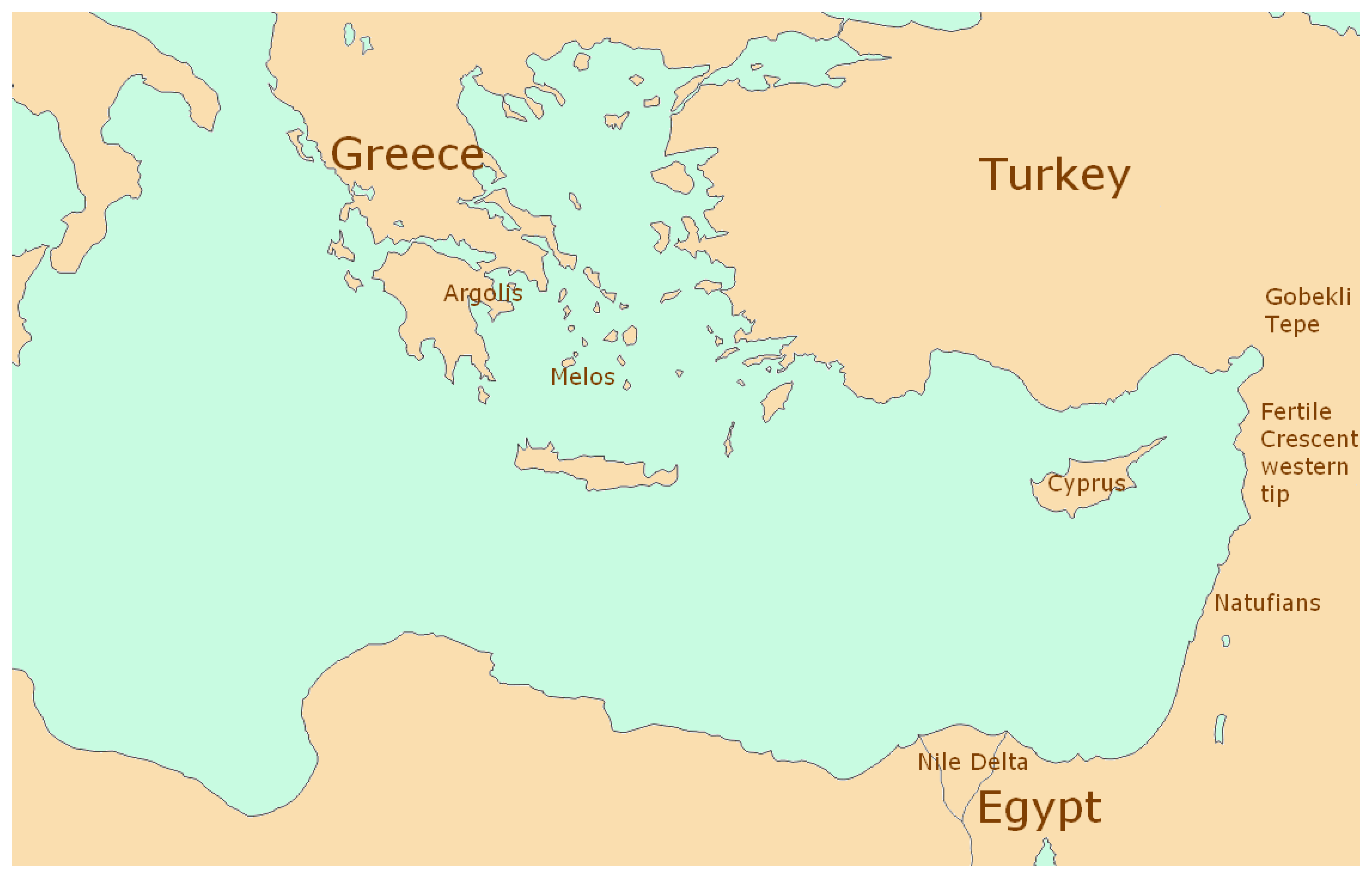
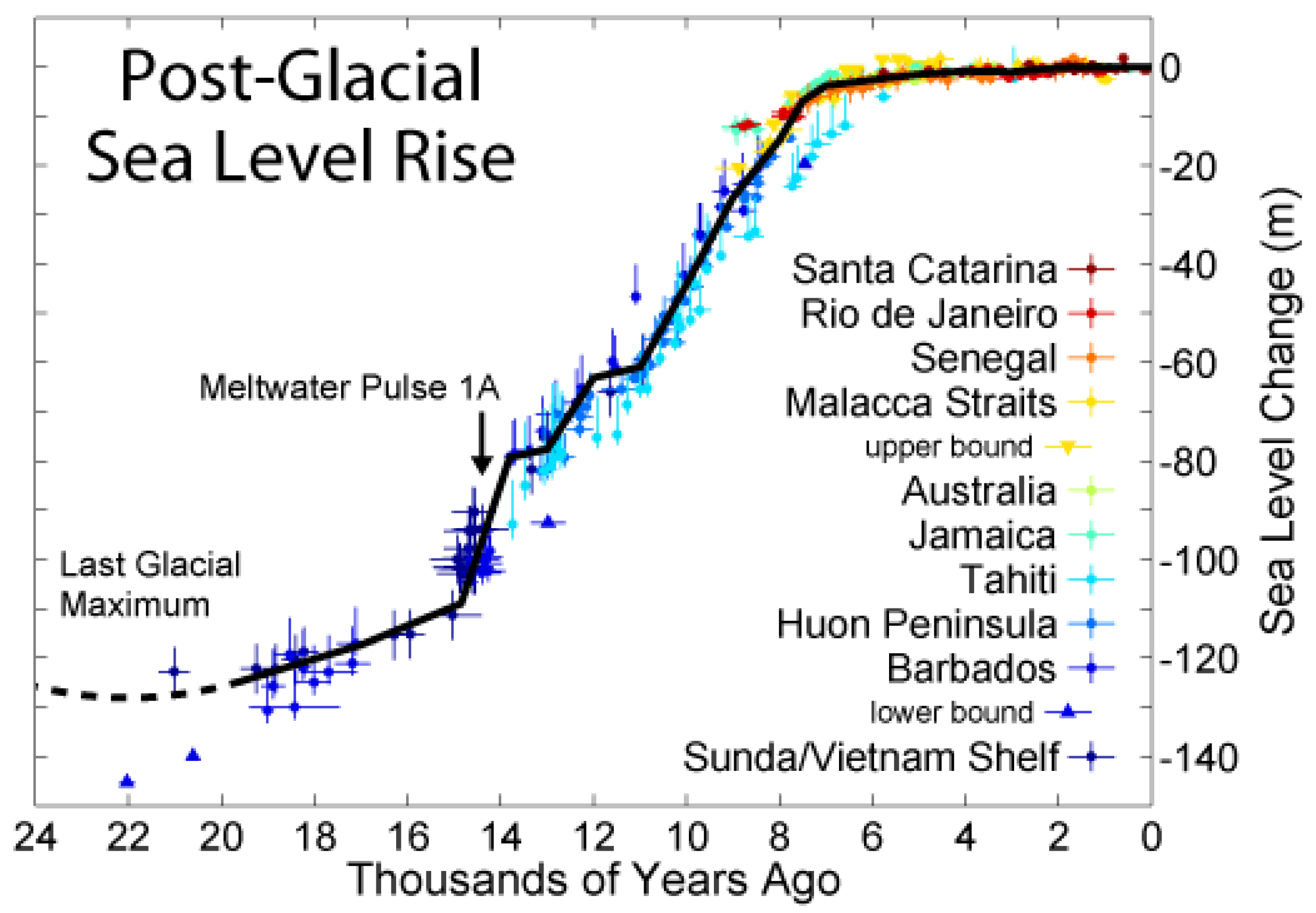
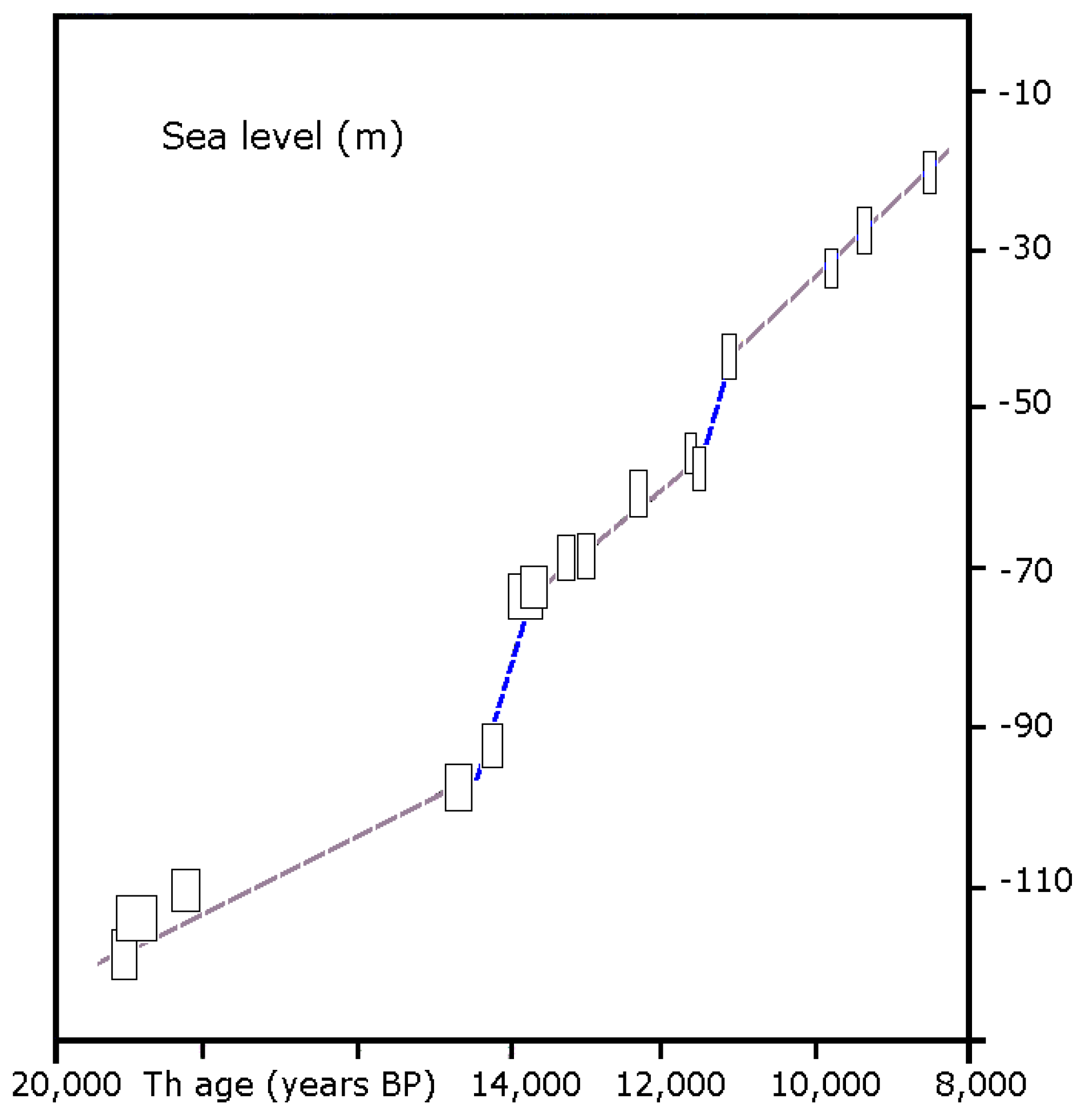
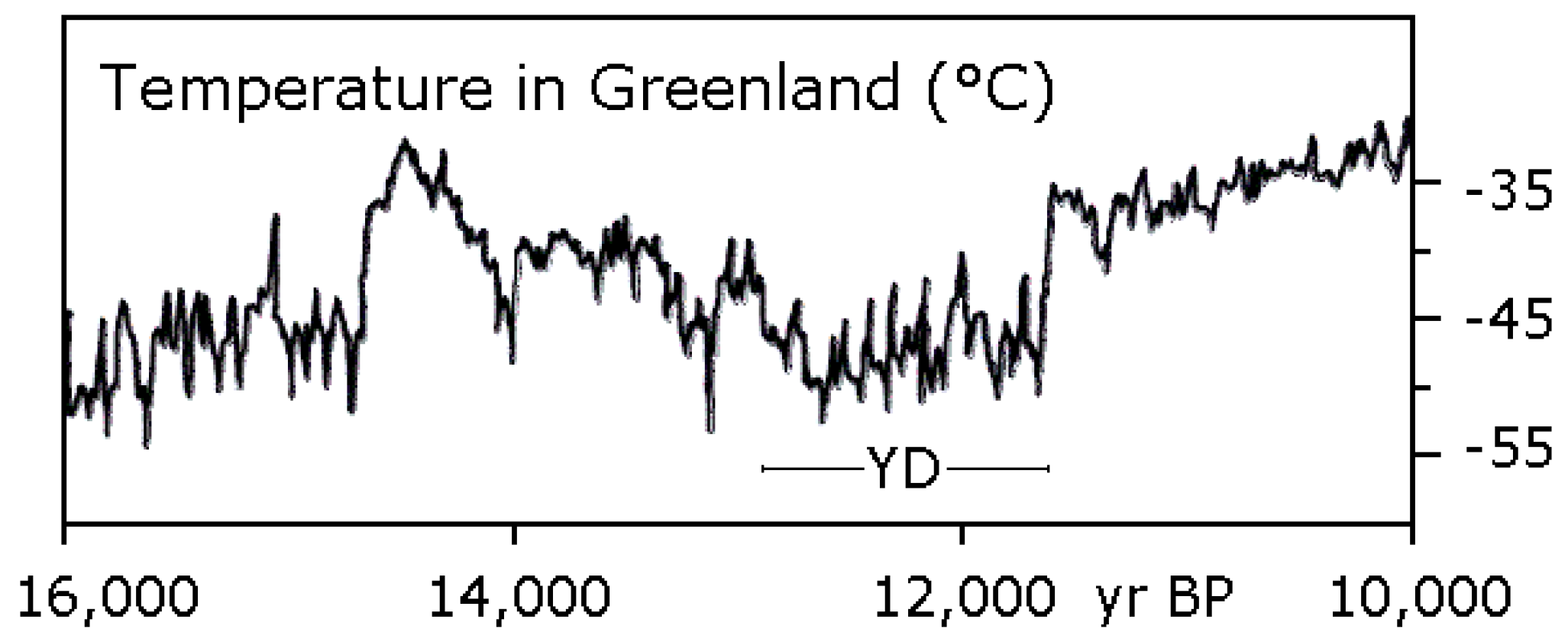
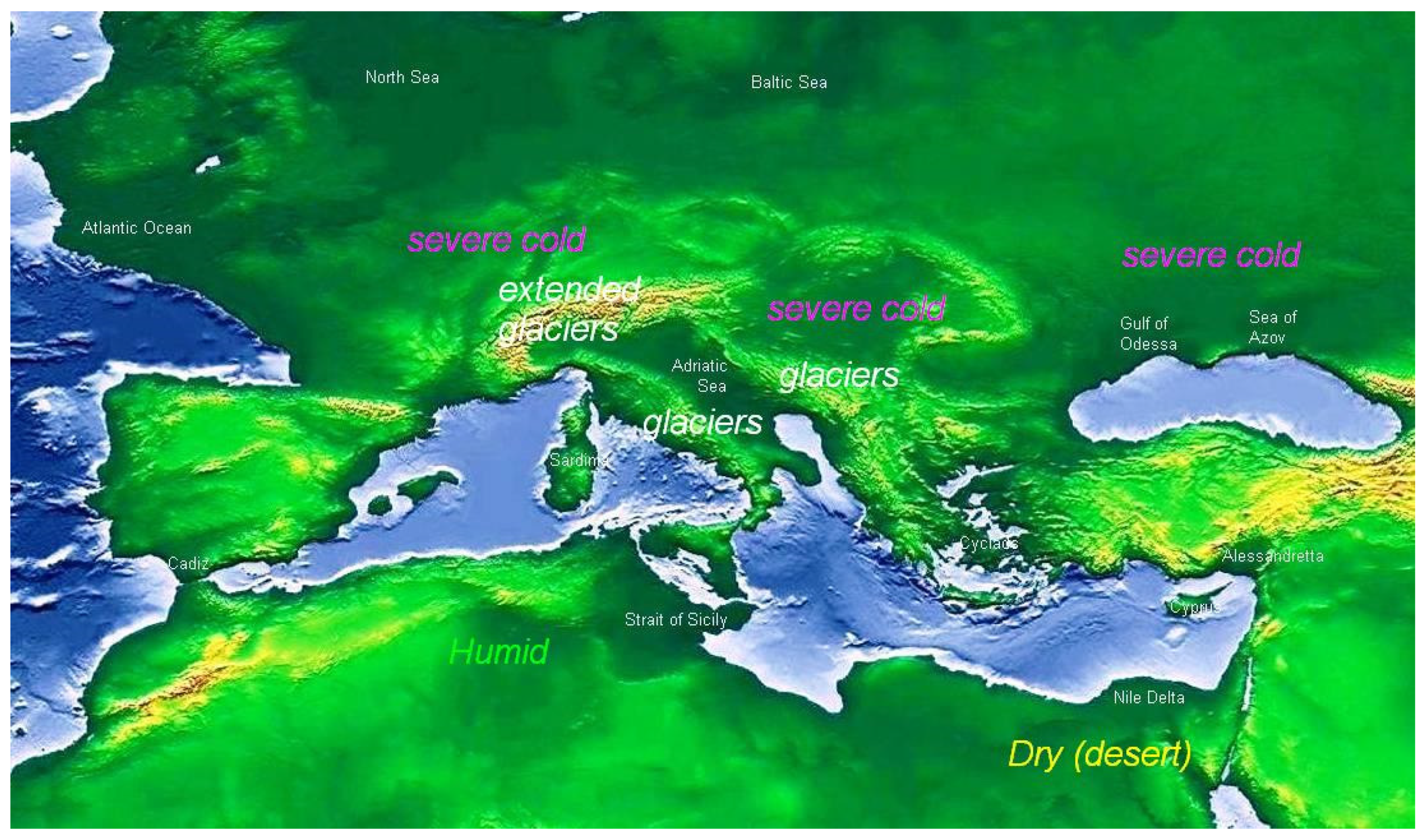
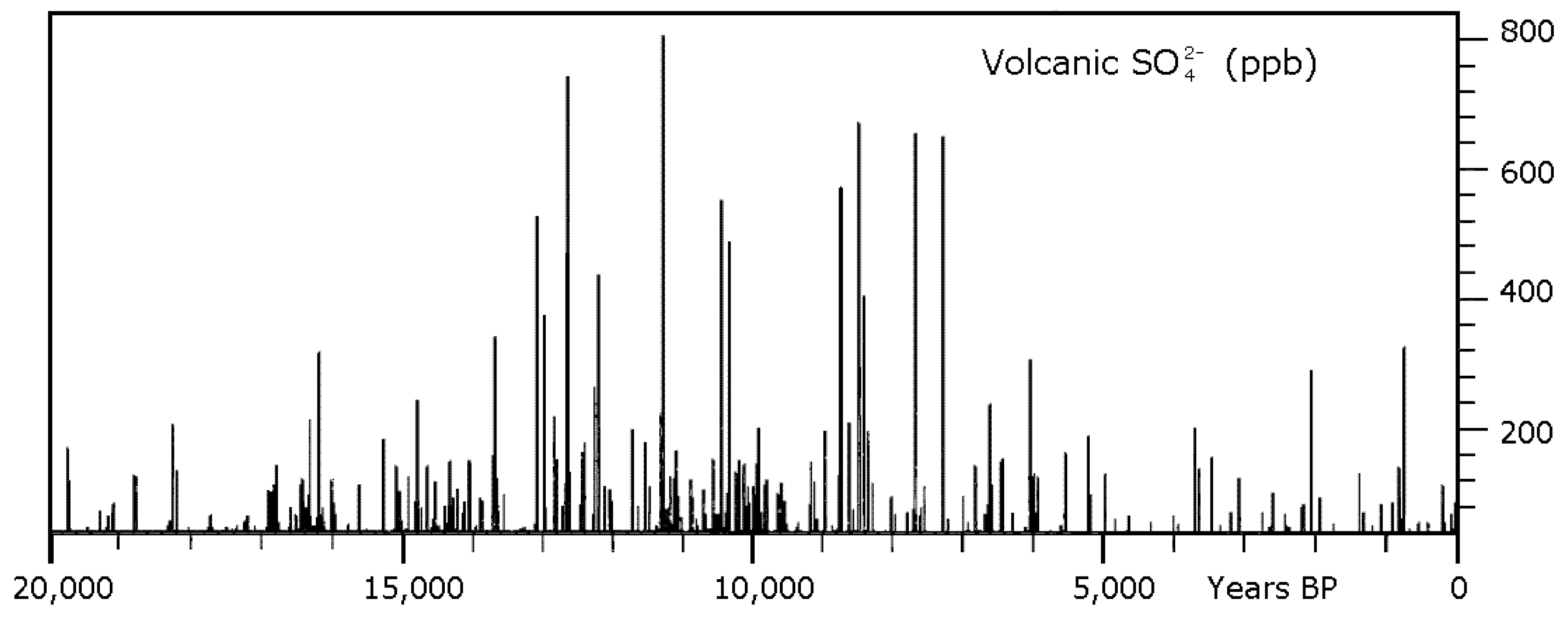
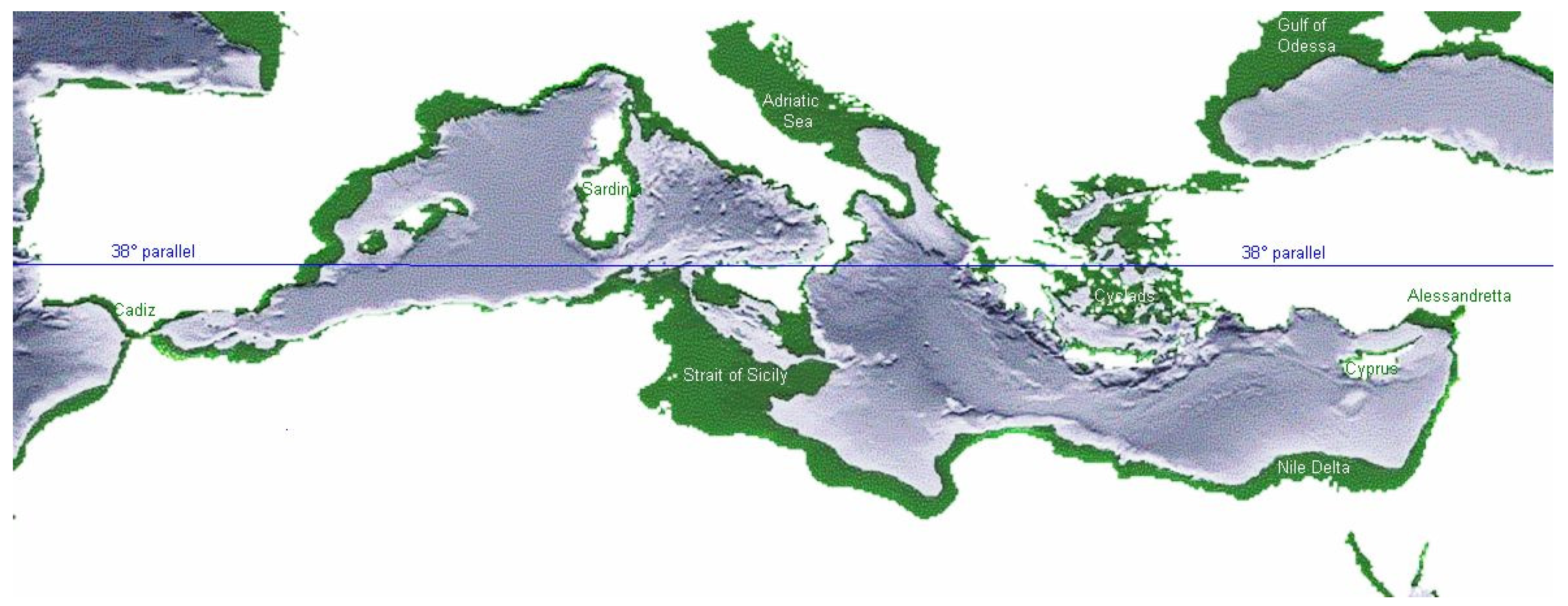
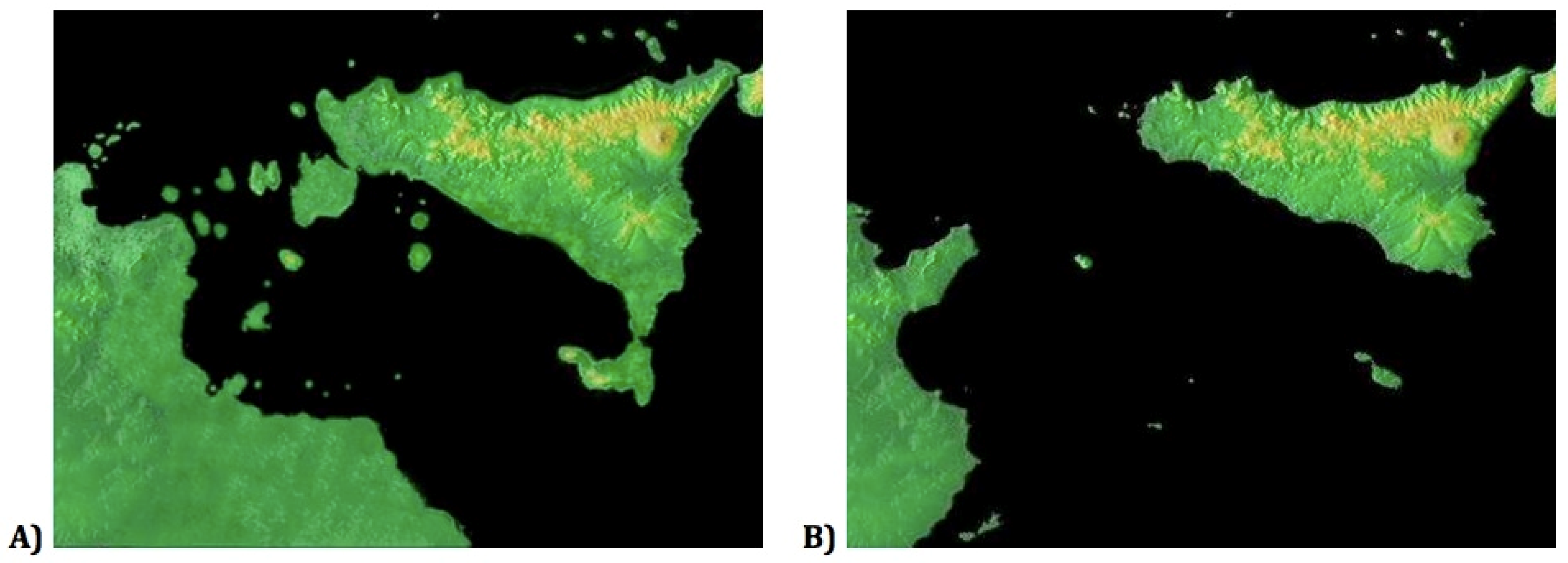

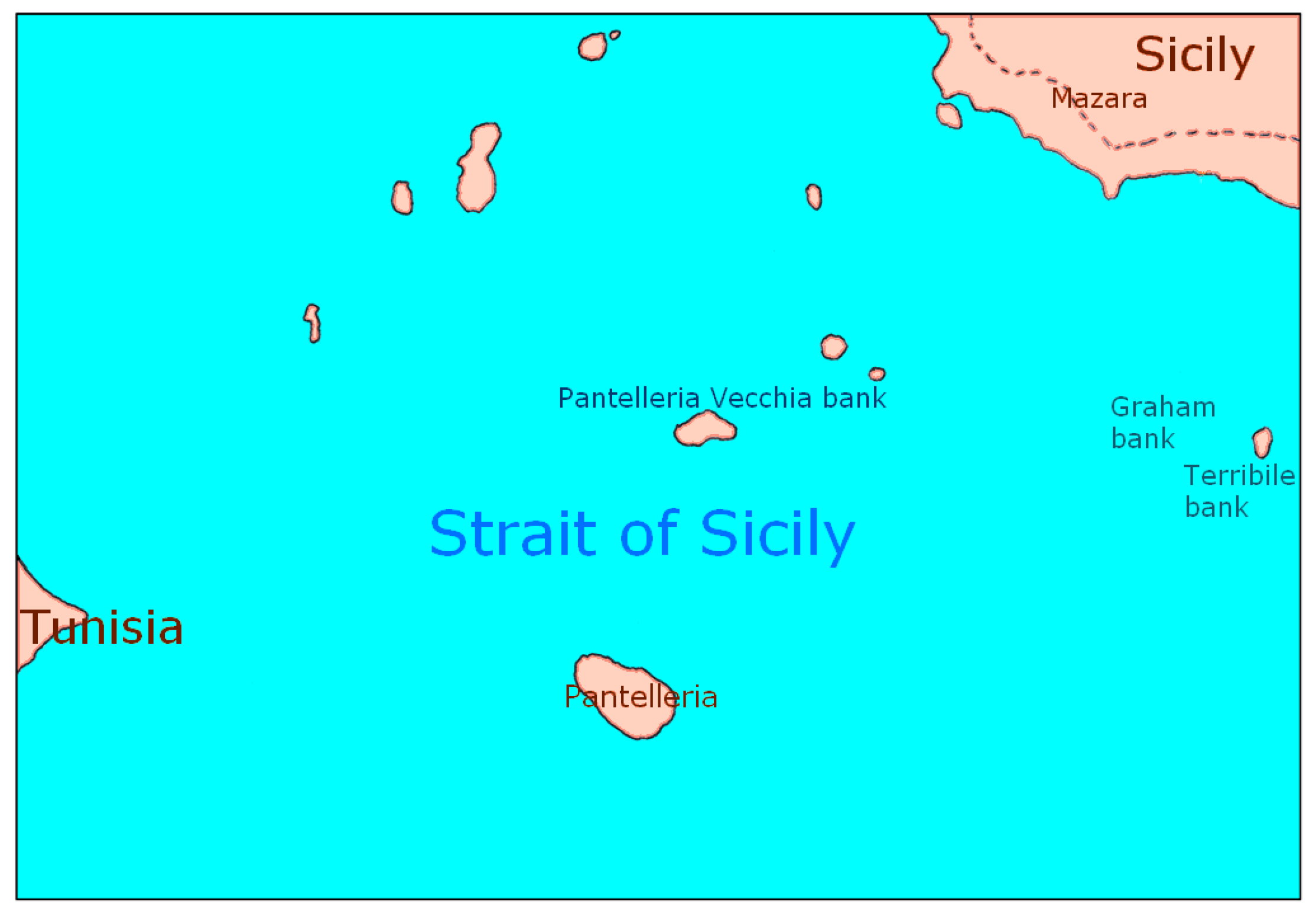
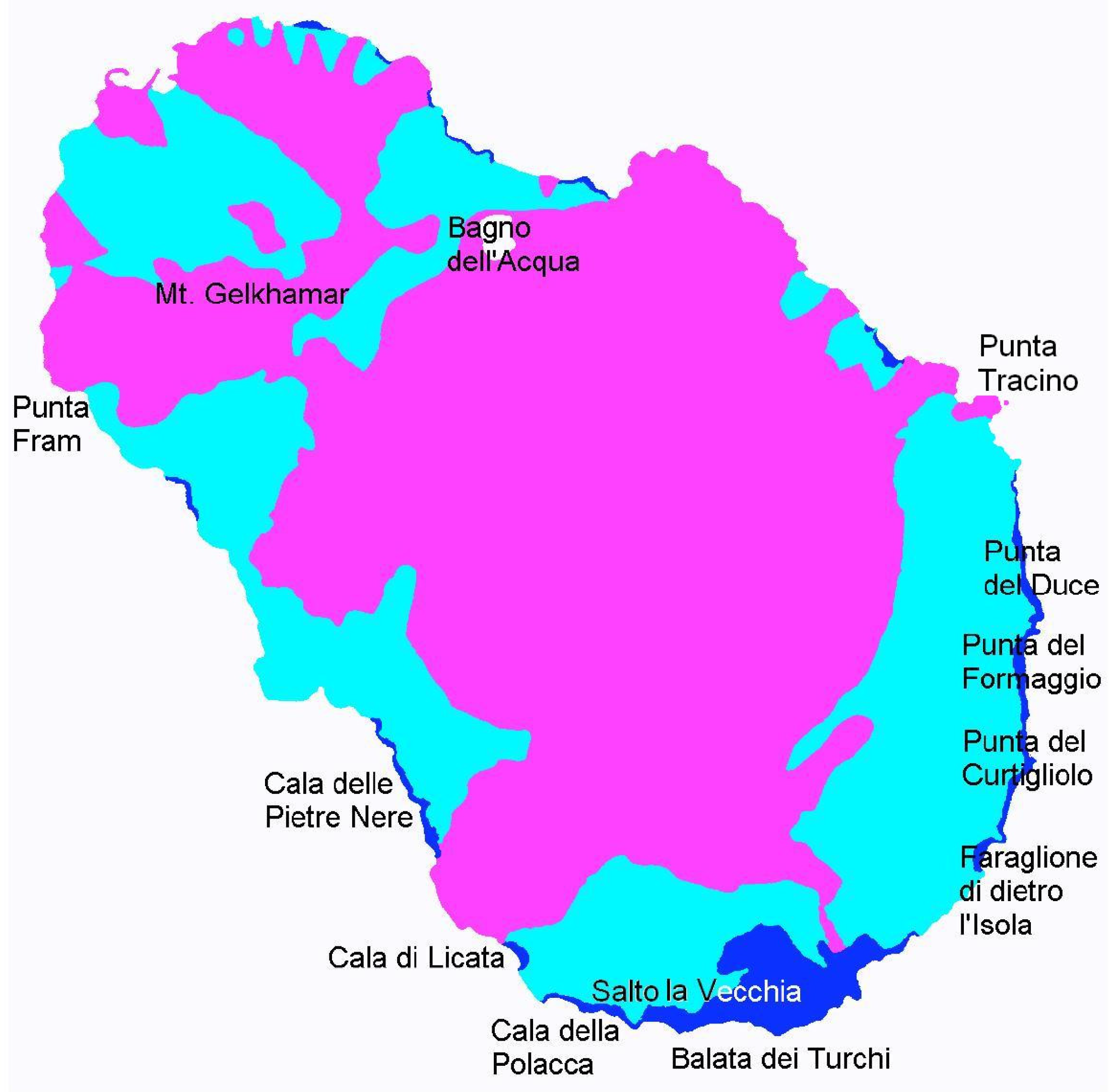
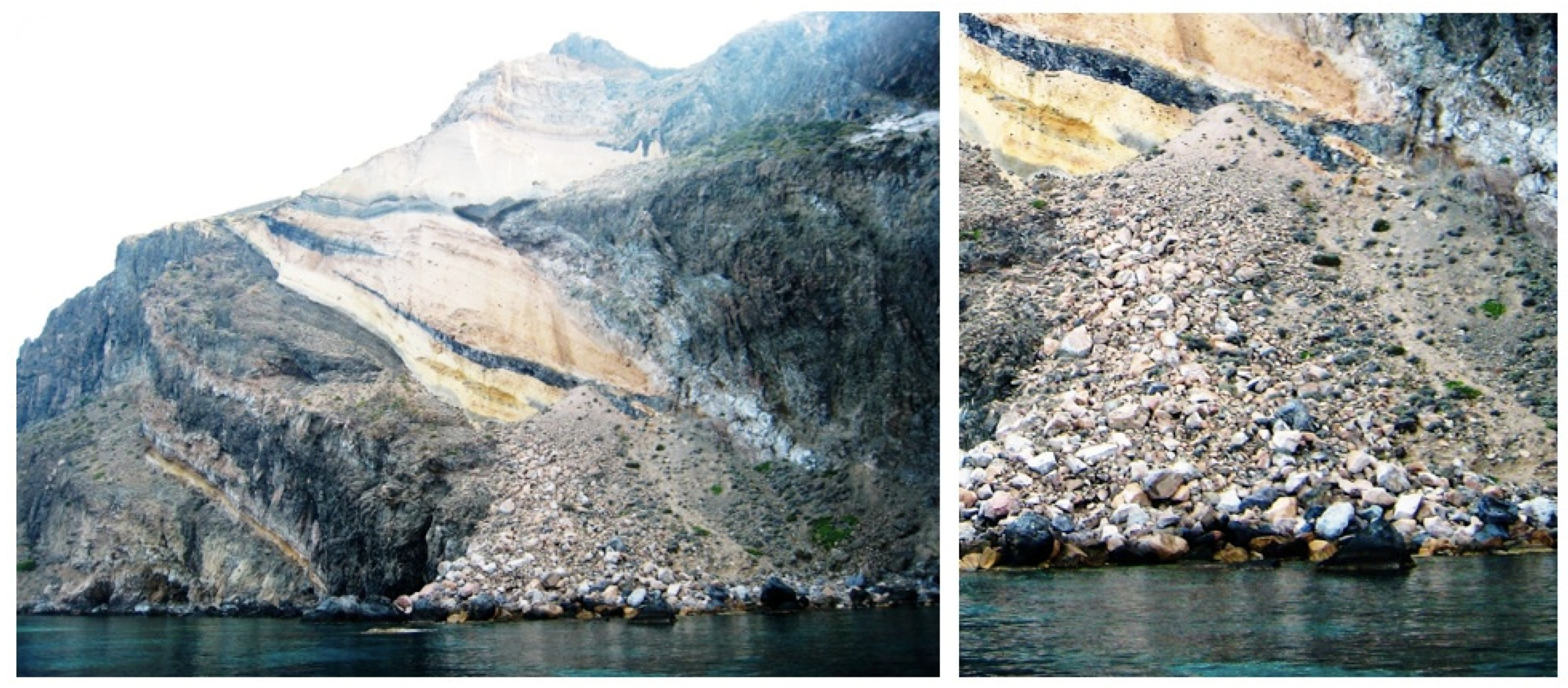
© 2019 by the author. Licensee MDPI, Basel, Switzerland. This article is an open access article distributed under the terms and conditions of the Creative Commons Attribution (CC BY) license (http://creativecommons.org/licenses/by/4.0/).
Share and Cite
Rapisarda, M. Atlantis: A Grain of Truth Behind the Fiction? Heritage 2019, 2, 254-278. https://doi.org/10.3390/heritage2010018
Rapisarda M. Atlantis: A Grain of Truth Behind the Fiction? Heritage. 2019; 2(1):254-278. https://doi.org/10.3390/heritage2010018
Chicago/Turabian StyleRapisarda, Massimo. 2019. "Atlantis: A Grain of Truth Behind the Fiction?" Heritage 2, no. 1: 254-278. https://doi.org/10.3390/heritage2010018
APA StyleRapisarda, M. (2019). Atlantis: A Grain of Truth Behind the Fiction? Heritage, 2(1), 254-278. https://doi.org/10.3390/heritage2010018



